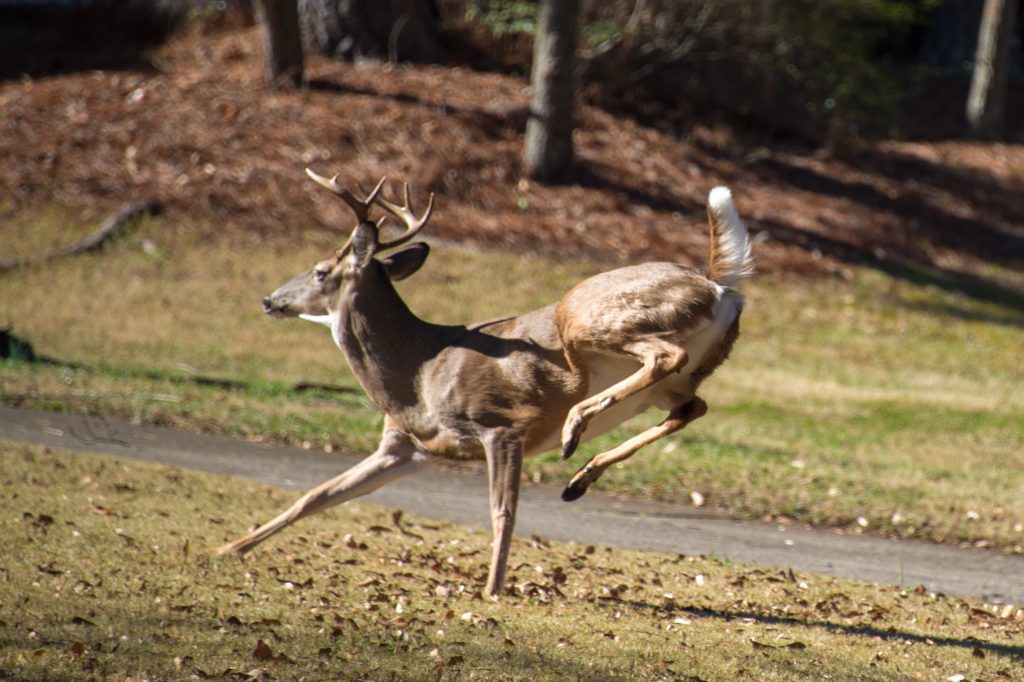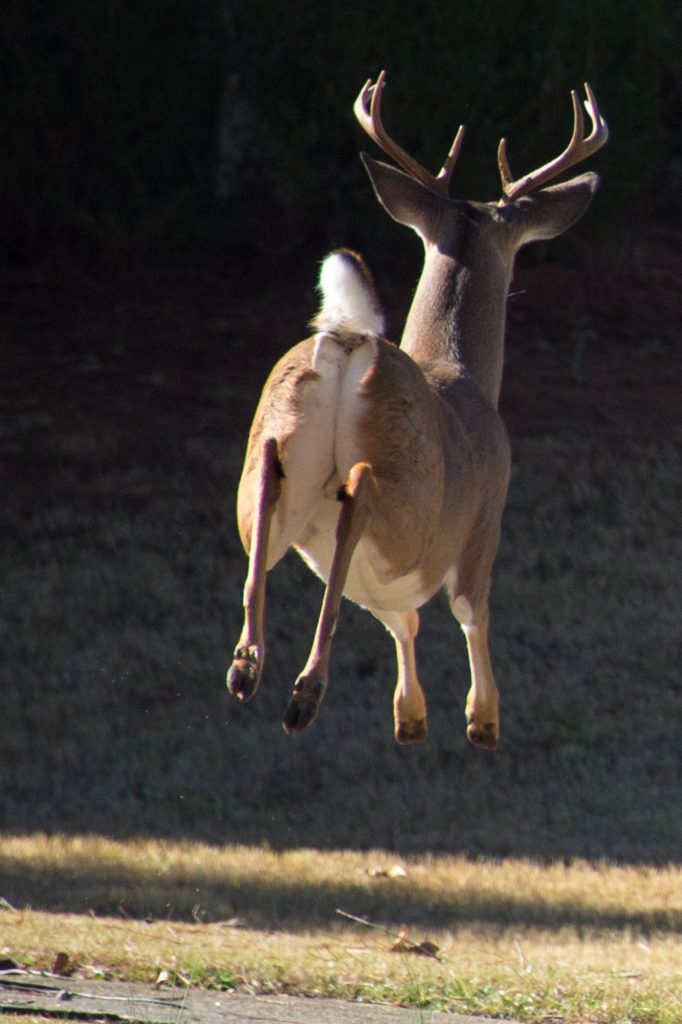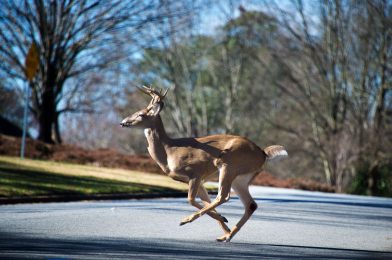| Nikon D4, 28-300mm ƒ/3.5-5.6, 300mm, ƒ/5.6, ISO 1250, 1/2000 |
According to Rollo May, the first step in the creative process is the encounter. An excellent example would be something similar to this eight-point deer in our backyard.
Seeing the buck out our back window was engaging to say the least, for me.

For me, these are not all that creative in photography, but the encounter is what ignited my creative process of me. So I got my camera and was out the door shortly for a close meeting of my own.

To be creative, one must be intense. Just as the intensity of the encounter of the deer with me gave it a “flight-fight” response, so too must I be where my heart is pumping, and I feel the intensity of the encounter.
The more absorbed you become in the subject, the more you can think of ways to portray the subject. So instead of you feeling anxiety and fear, like the deer, and having a “flight-fight” response, Rollo May says the creative finds the “joy.” Robert Maslow would say we are self-actualized.
For me, this creativity comes when I have genuinely emersed myself into a subject to where all this information is firing the synapsis in my brain, making correlations that were not given to me but by my thoughts on the subject.
Before performing the genuinely creative act, one must have engaged all their being to the point that now the unconscious is as much at work as the conscious, allowing for those eureka moments.
However, when you start thinking like this, you must be courageous enough to start acting on these thoughts. They are new thoughts, and you are prone to failure by just working on them. You may try something only to discover that your thoughts are incomplete.
One of the main reasons for tenure for professors is for them to be creative. Therefore, they must be allowed to try crazy thoughts and occasionally fail at the possibility of scientific breakthroughs.

You may get help along the way to help you engage more on a subject. For example, my daughter spent most of the day with world-renowned viola player Pam Goldsmith and picked up a few pointers to improve her viola skills.
Stages of the Creativity
- Encounter
- Emersion into the subject
- Incubation
- Eureka moments
- Execution
- Verification
Some people never move through the stages. They may get excited about taking photos, for example. They are in love with the process more than the results. These people have difficulty understanding why no one hires them for jobs. They lack creativity.
Creativity can be in the form of ideas or new ways of thinking, but they are not bringing anything new to the table.
Malcolm Gladwell says from his research that it is about 10,000 hours before the artist has mastered the craft enough to be creative. While this may be all for a bell curve,e I believe it comes much late for many folks.
Time commitment is the best way to know if you are getting close. Do you have the courage and fortitude to commit yourself to what is needed? How much do you know about the subject you want to photograph?
Become an expert on the topics you want to photograph, and I can guarantee that you are very close to seeing new possibilities and ideas for photographing this subject in a way others cannot.
Some people are amazed at how some photographers are just always getting incredible photos. However, I notice that these people can anticipate where they need to be to get the best possible moment with the best possible light and composition.

